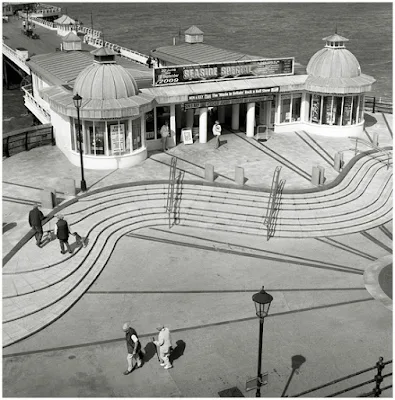The first Russian language issue of Signal - September 1942
The story of identifying
Franz Krieger's wartime album, documented on the New York Times website, has been an intriguing one and it reminds me of a rather good book i purchased a few years ago detailing in part the work of German Wehrmacht's 'Propaganda Kompanions' (PK).
Sadly the
NY Times articles do not go into that much detail about Krieger's working history or who he was shooting images for, but it is most likely that his photojournalism talents were put to work for
Signal, a German military magazine that was published between 1940-45 and reached a circulation of 2.5 million by 1943. It was the biggest selling magazine in Europe until 1945 and was translated into over 20 languages.
Signal was developed out of the
Berliner Illustrierte Zeitung as magazine that promoted Germany as Europe's benefactor and protector. Photography was the main vehicle of its propaganda intentions. It used the human interest story and the photo essay to great effect making it a very popular read across Europe as it reported the string of victories during the early war years. Even the British press were forced to use
Signal photographs as no British made images were available. Amazingly
Signal had no connections or loyalty to Goebbels propaganda ministry, it was totally under the control of the German Army. There were no civilian war correspondents and notions of journalistic independence did not apply under the command of the Wehrmacht. Photojournalism was seen to be important however, and the Germans used it to great affect.
By comparison, the British were ill-prepared and complacent about propaganda. Even during the war years, experienced photographers like Bert Hardy of the
Picture Post were made to take British Army photographer courses. The instructors were often far less experienced than the students and the equipment was virtually antique, Hardy decided to use his own Leicas and did so until they broke. The army refused to have them repaired. Eventually the British set up their own magazine called
Parade in 1940 but with a readership of just 100,000 it was never in a position to be a serious competitor with
Signal.
The German approach was far different. The Propaganda Kompanions numbered 12,000 strong at one point. A PK was a soldier first and a photographer second. One photograph even shows a PK's Leicas next to a his Luger. Signal's editors actually staked the journalistic authenticity of Signal on the fact that
" The photographers are not press photographers in the accepted sense of the word. They are like their comrades, soldiers of fighting units and at the same time soldier war correspondents" As soldiers these correspondents had to follow orders and fight.
The portraits of the
Russian soldiers (some of them Jewish) captured on the Eastern front may have been partly down to one order of the day to PKs during operation Barbarossa to produce pictures that show clear racial contrasts between the German and Soviet soldiers.
As the war turned against Germany, so did Signal's fortunes. The long retreat in Russia and the lack of new victories in the west forced the magazine in a world of fantasy and make believe. Divisions broke out between the increasingly controlling Propaganda ministry and the Wehrmacht high command. Eventually the magazine resorted to show business articles and old victory stories recycled into new news as the good news ran out.




